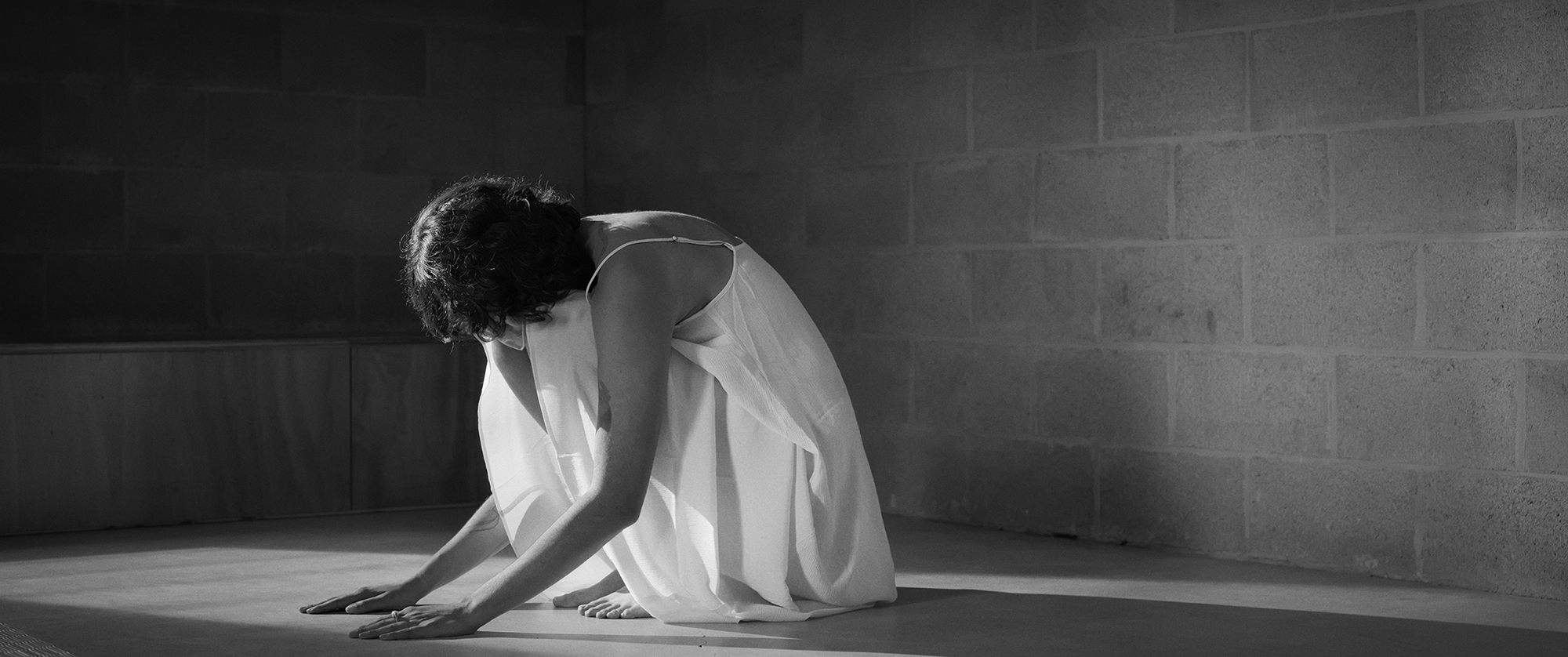Timings and tropes of horror film open a portal to Eternity in the work of Hayley Millar Baker
Imagine the sound that opens the threshold between the living and the spirit worlds; it might be a low, earthy, guttural vibration, as if drawn from the depths of the universe. A sound that enters and inhabits your body, reverberating through your bones, awakening you to the rhythmic pulse of your own blood. A few weeks ago, in a dimly lit exhibition space, I heard this sound. It assaulted me as I walked through a veillike curtain, and it was emerging from a luminous female figure on a vast screen. This central figure of the film Eternity the Butterfly (2025) seems to belong to another world; she moves slowly, carefully, and she is uncompromising with her averted gaze – as if refusing to acknowledge the viewer. The scale of Eternity (if we are to understand this is her name) lends to her a kind of omnipresence; she appears all-knowing and all-powerful.
Artist Hayley Millar Baker, a lens-based artist, first came to prominence with her cinematic black-and-white photographic series (including A Series of Unwarranted Events, 2018, a set of four photocollages, each alluding to a violent episode in the Gunditjmara people’s story during the invasion and colonisation of their Country) that draw on both personal and collective memory to reassert First Nations sovereignty. Since her inclusion in the 4th National Indigenous Art Triennial in 2022 at the National Gallery of Australia, Baker has become known for her moving-image practice and, as demonstrated by Eternity the Butterfly, her ability to stretch time into a taut, anticipatory experience. Belonging to the Gunditjmara, Djabwurrung and Nira-Bulok Taungurung peoples through her maternal lineage, and of Anglo-Indian and Portuguese-Brazilian ancestry on her paternal side, Baker grounds her artistic practice in her ancestral connections. She approaches her work as a form of cultural maintenance, ensuring that Indigenous knowledge, sovereignty and wisdom remain current, accessible and alive.
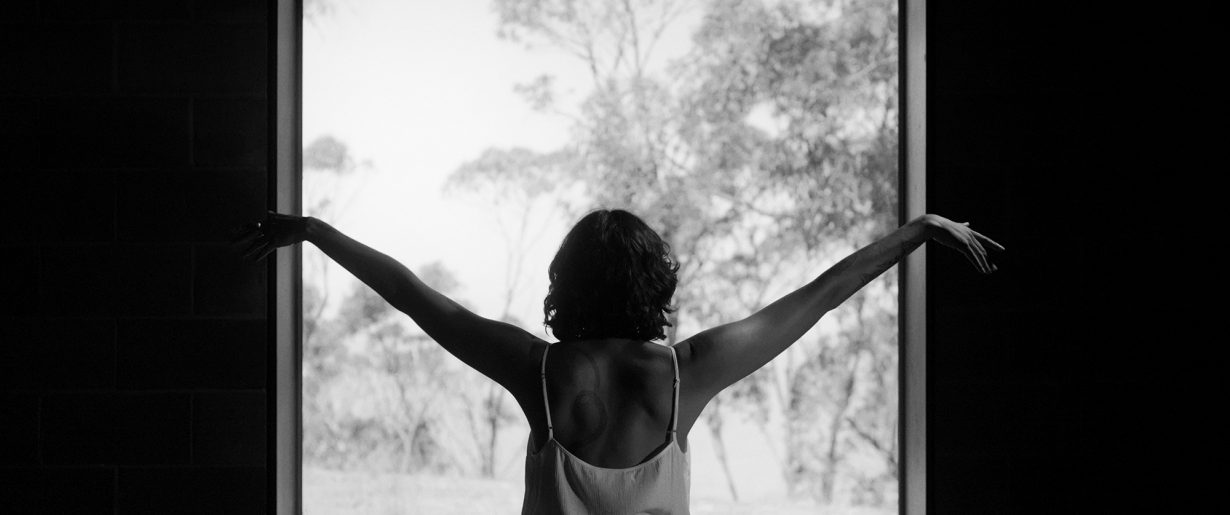
In Eternity the Butterfly, the everyday potency of female Indigenous interconnectedness takes a powerful, contemporary form. The work unfolds through two viewpoints inside a cinder block home that flicker back and forth: from one perspective, a fixed partial view of an empty room; from the other, a view of Eternity, the lithe, luminous female figure, who somehow appears both earthly and ethereal, light and dreamlike. In the first few flickers between viewpoints, I notice little: Eternity makes clear, deliberate stretching movements in front of a large window, while in the stark room a formation of small rocks appear in a line on the floor. Gradually, Eternity’s movements begin to interlink, a rhythmic pace emerging, and with each shift of viewpoint the rocks seem to grow; first slowly, as though summoned by her all-encompassing, guttural vibration, then transforming into black fabric forms and eventually swelling into looming dark monuments.
The monuments expand and solidify as Eternity breathes meditatively; sometimes in long, slow intakes, at other times in short, staccato pants. Rhythmically mirroring these breaths is a soundscape of birdsong. At first, only the sounds of a few softly heard native birds emerge, gradually building into the full cacophony of the bush in the heat of summer at dusk. It’s as if Eternity is conducting them with her breath, both the monuments and the birdsong, folding them into one another, interdependent and interconnected, with each intake. As the sonic swell builds, Eternity begins to chew ochre, masticating it into a paste and breaking the soundscape’s crescendo with a final expectoration – a spray of white ochre paste over the black monuments. This ceremonial eruption of pigment silences the birdsong and gives voice to the monuments: as though enlivened by the ochre, their hurried, indecipherable whispers rise in volume until Eternity, with a single sharp exhale, topples them all.
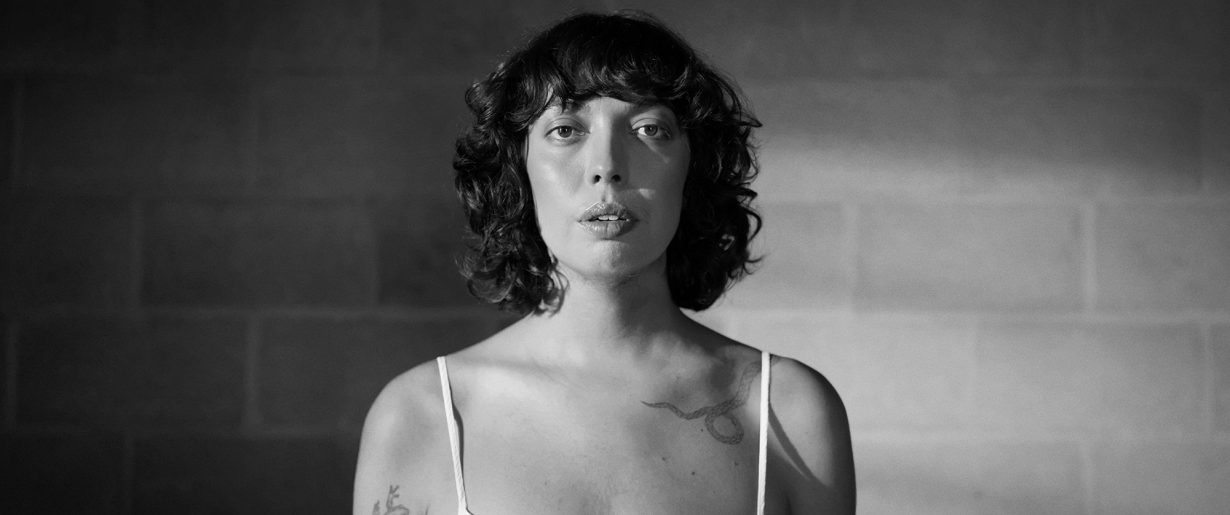
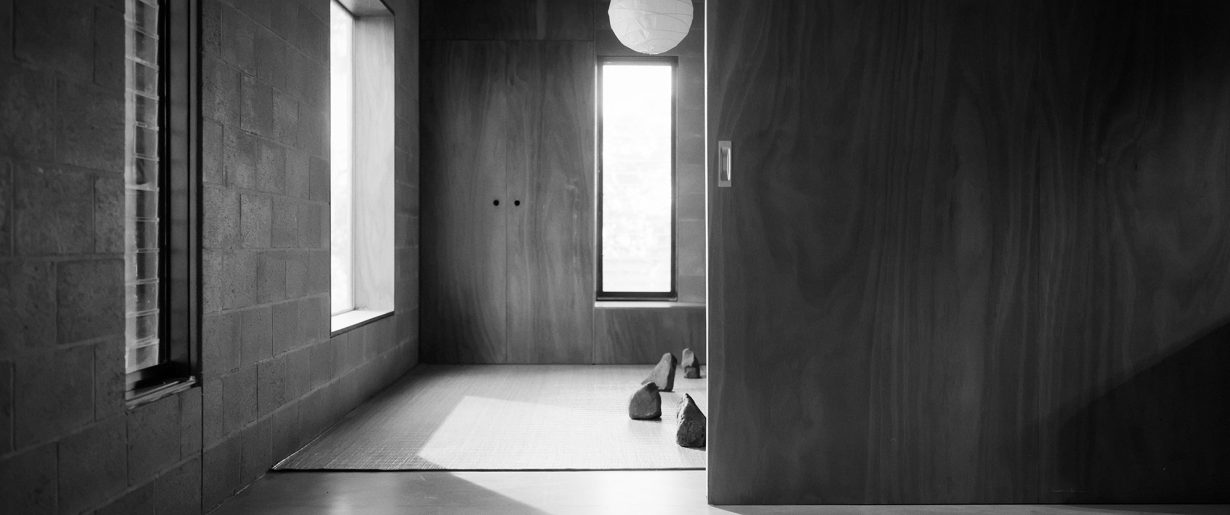
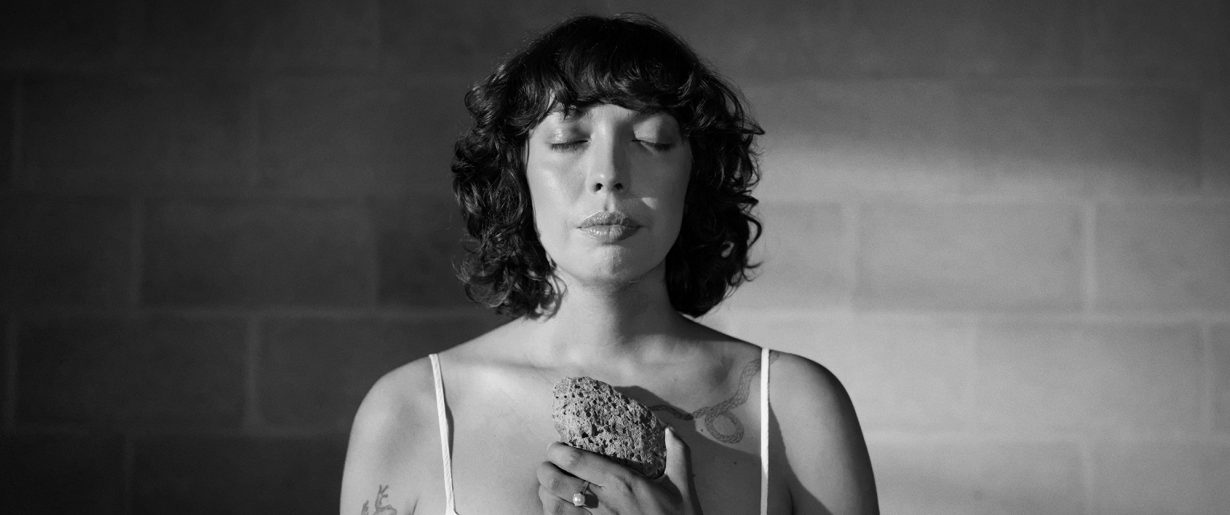
Eternity the Butterfly is the third in Baker’s ongoing series of moving-image works, each a chronicle of a contemporary Indigenous haunting. Like its predecessors, Nyctinasty (2021) and The Umbra (2023), Eternity the Butterfly acts as a kind of visual threshold to the ever-present spiritual world of Aboriginal cosmology, here rendered in tonal black, white and grey. Anchored by the familiar tension-driven rhythm of the horror genre, Baker uses pace in all three films to build a sense of disquiet: lingering shots breed unease, slowly building towards a threshold, before arriving at a sudden, shocking cut that dissolves the veil between the living and the spirits. Through this deft control of time, she asserts the presence of the spirit world just beyond reach, giving it form for a fleeting, unsettling moment.
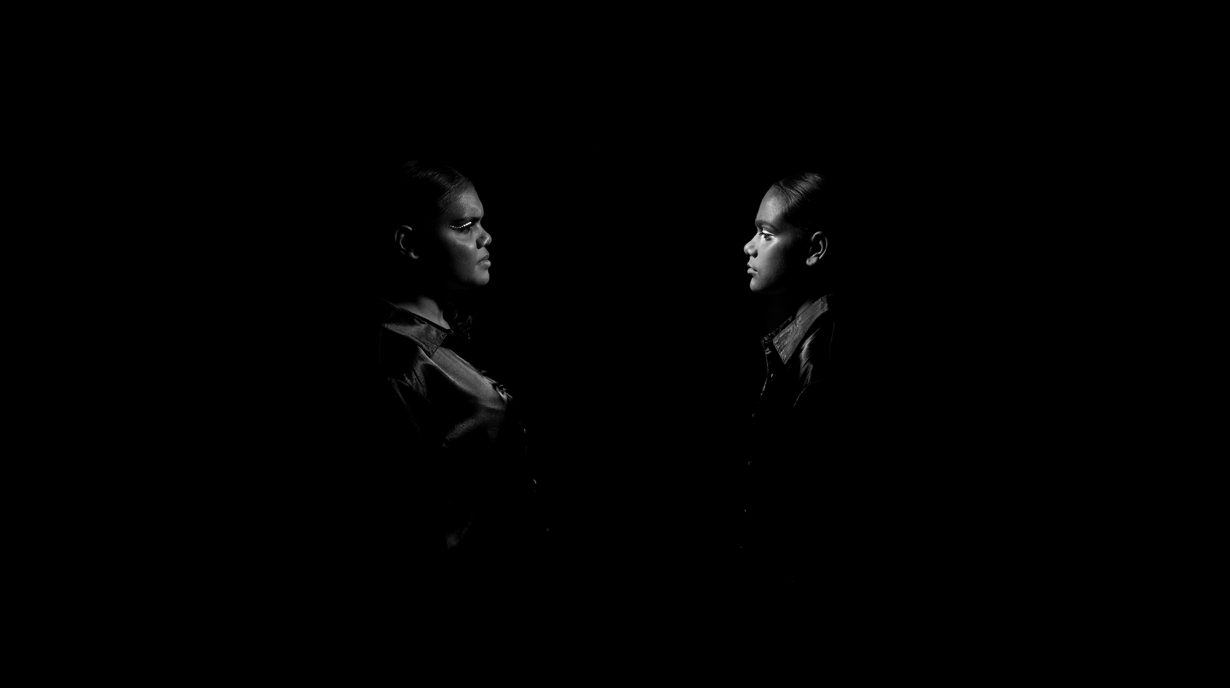
Eternity inhabits a refined architectural mise-en-scène, echoing the worlds of Nyctinasty and The Umbra, in which those central female characters also dwell within spaces of elite modernist architecture. In Baker’s work, the contemporary Indigenous female body serves as a conduit of everyday ceremony, allowing otherworldly experiences to flow through ordinary moments. All three films centre on female First Nations protagonists who present as an embodiment of their ancestral spirits and whose internal stillness renders every action assured and deliberate as they move within these studied interiors. While Baker draws on cinematic traditions of the horror genre to build unease and anticipation for the viewer, the protagonists, in contrast, appear indifferent, as if performing the mundane. Their actions read as routine; their ability to summon and move between time and realities seems entirely ordinary. In Nyctinasty, Baker is the protagonist who, through the menial tasks of her evening routine, gives form to the unseen spiritual presences that surround her. In The Umbra, a storm raging outside the windows of the house acts as a visual device that dissolves the boundary between the physical and spiritual worlds, allowing two young First Nations women to meet across mirrored realities. While we, as viewers, are surprised by the collapse of the veil between the two worlds, the protagonists appear confidently expectant of this outcome.
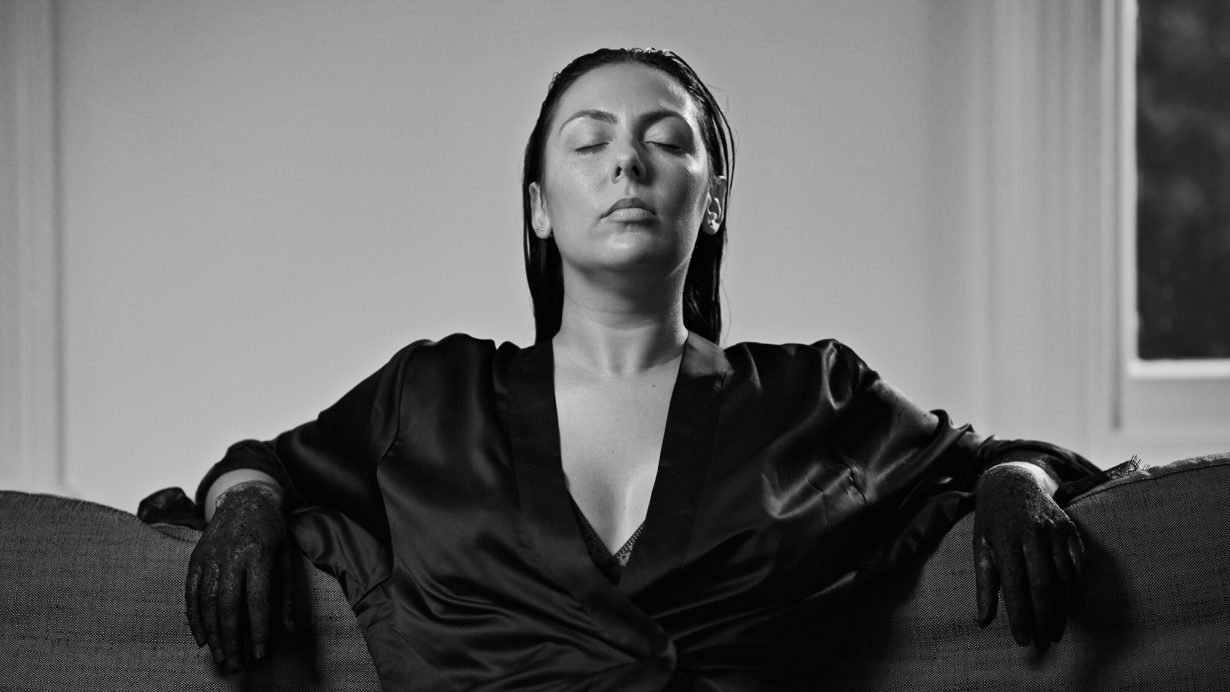
These women are in command. And these tightly curated domestic spaces are under their dominion. They govern the threshold between the material reality before us and the spiritual realm. Anchored by ancestral knowledge and emboldened by trust in the cyclical nature of life, death and transformation, the protagonists invite the audience to teeter with them as they guide a convergence of realities. Baker
cultivates a lingering sense of unsettlement, using this sense of un-
certainty to draw viewers into the liminal space between the known and the always-known, where Aboriginal knowledge unfolds as
relational and generational. And as the titles of the three films suggest, Baker’s works illuminate First Nations stories and histories that were once concealed – hidden in the shadows of the past – and allow audiences to encounter their spectral and enduring presence. In Eternity the Butterfly the ever-present spirits are given corporeal forms that are brought into being by Eternity herself. Her breath, her movement, her voice traverse time and space, breaking the veil between here and the Everywhen – a First Nations philosophy that the past, present and future are always in simultaneous occurrence and in continuous dialogue.
Nyctinasty, The Umbra and Eternity the Butterfly are on view in The Veil, Buxton Contemporary, Melbourne, through 1 November
Mikala Tai is a writer and curator based in Sydney
